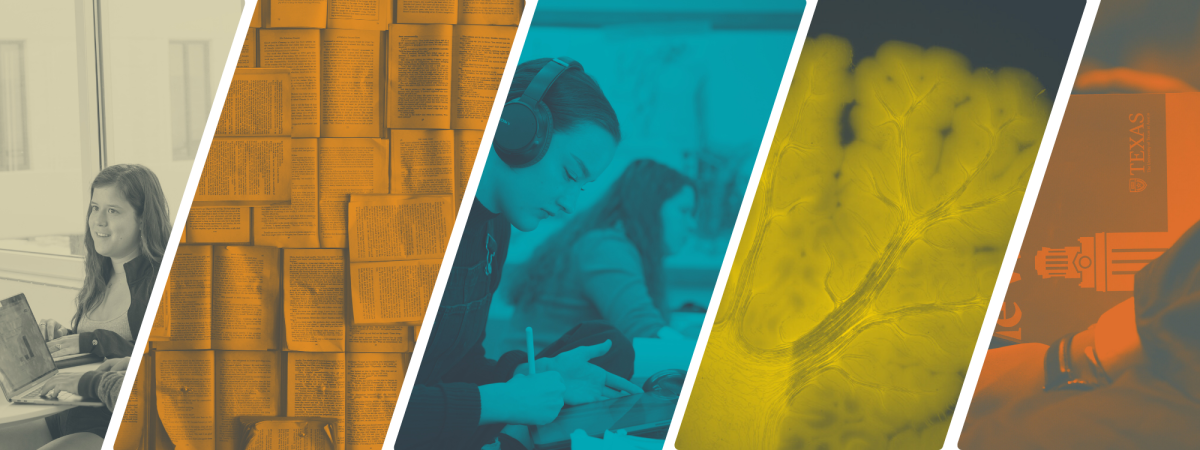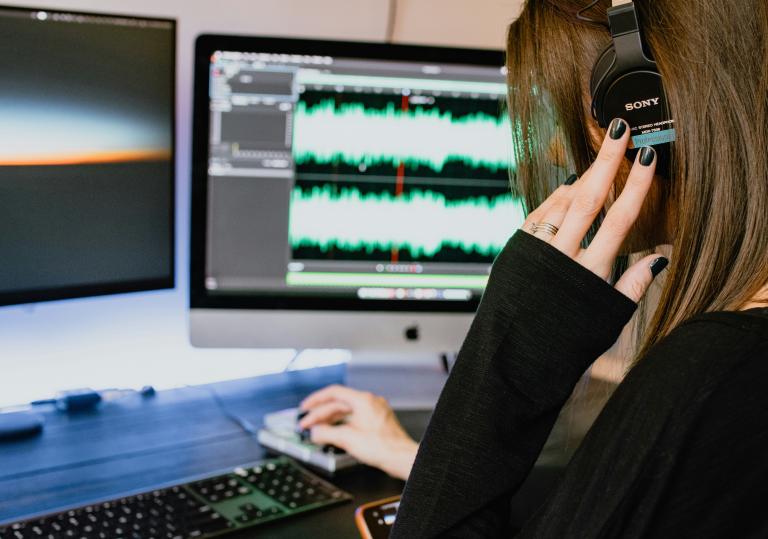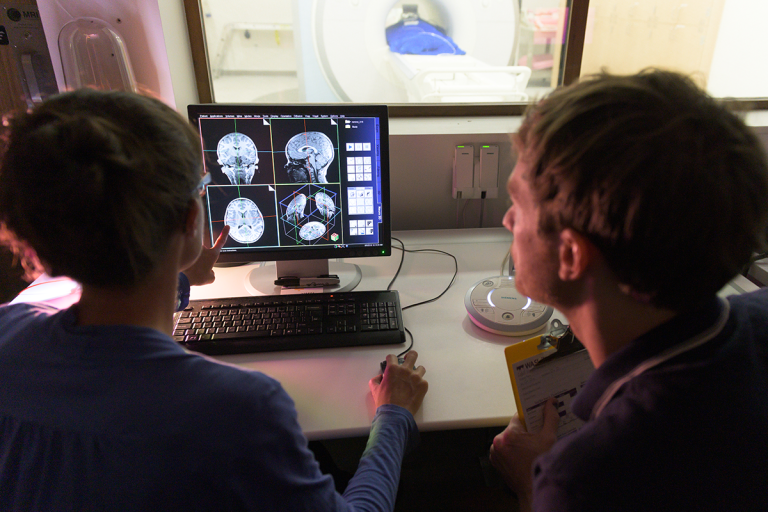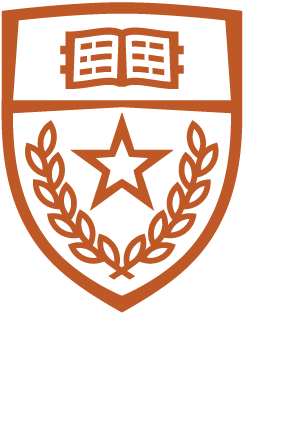
Computing Across Disciplines is a three-part series that explores the interdisciplinary programs at UT that are shaping the future of computer science. For many students, computer science isn't just about writing code. It’s about exploring how technology intersects with their passions in areas such as history, business, linguistics, and neuroscience.
As computer science programs across the nation experience record-breaking application rates, the demand for interdisciplinary programs continues to grow. Students are seeking ways to use technology not just to learn, but to innovate and apply their skills to solve real-world challenges. These programs are helping students gain the skills and experience they need to prepare for careers that didn’t exist a decade ago—careers that require both technical expertise and a deep understanding of other disciplines.
Part 1: X+CS
UT Computer Science has partnered with departments across UT Austin to create X+CS, an interdisciplinary program launching in fall 2025. Designed for students eager to connect ideas and solve complex challenges, the X+CS program blends computer science with the expertise of other fields.
Instead of the traditional double-major route, which often requires juggling separate degree plans, X+CS combines two fields into one cohesive academic experience. It’s a program that brings collaboration to the forefront, giving students the tools to explore how technology can enhance and transform their interests.
“The degree plans are designed to make sure the students have deep knowledge in both fields and understand the overlap of the fields,” Associate Chair of Undergraduate Education for UT Computer Science Dr. Alison Norman said. “We look to have courses that are integrated and include information from both fields.”
With its integrated curriculum, X+CS allows for a focused yet flexible path to graduation, preparing students for careers that require both technical expertise and cross-disciplinary insight. Whether it’s using algorithms to understand the brain or applying machine learning to interpret historical records, X+CS provides the foundation to tackle real-world challenges in innovative ways.
“Knowing about what is going on in other fields is important for all of us for an understanding of how what we do affects others,” Norman said. “So much of our lives are starting to be digital, and understanding what is behind that, what the capabilities of the systems are, can really help inform what you are doing in any field.”
History+CS
Imagine an AI tool trained to unlock the secrets of centuries-old manuscripts, uncovering lost knowledge hidden in ancient languages. Or a video game meticulously crafted to bring historical eras to life with stunning accuracy. The History+CS program makes it possible.
“There’s usually a sharp divide between liberal arts fields and STEM,” Assistant Professor of Computer Science Sarah Abraham said. “We need more people crossing that divide between the liberal arts and the technical side to have skills in both. So they can critically analyze from both of those perspectives.”
This program, a collaboration between the Department of History and the Department of Computer Science, blends the strengths of both. It gives students the chance to use technology to understand history better and use history to make sense of today’s tech-driven world.
“I truly believe we've hit the information revolution, meaning that computer science just intersects with every single part of our life,” Abraham said. “History is very uniquely equipped to put that in perspective and help people understand what that means.”
Within the curriculum, students complete a capstone course or independent research project to apply what they are learning beyond the classroom.
Training machine learning to process difficult handwriting and obscure languages, observing political cartoons, and mapping demographics are all projects that Mitsubishi Heavy Industries Chair in Japanese Studies and Professor of History Mark Ravina envisions for the capstone program.
Exploring the limits of both fields is just as important as exploring their overlap. Ravina sees this as an opportunity to ask big questions.
“Historians need to ask, ‘What can we quantify, and what can we put into a data set?’” Ravina said. “For computer science, the question is, ‘Where does the algorithm fail? What aspects are incredibly hard to quantify or don’t fit neatly into a data set?’”
By combining hands-on learning and big ideas, History+CS opens up new ways to look at the past—and create tools for the future.

Linguistics+CS
As generative AI continues to advance at a remarkable speed, the connection between language and technology has become stronger than ever. Linguistics+CS, a partnership between the Department of Linguistics and the Department of Computer Science, gives students the skills to develop Natural Language Processing technology, understand syntax and semantics, and leverage computational linguistics.
“Linguistics and CS are actually very much connected fundamentally,” Associate Professor of Linguistics Dr. Jessy Li said. “With computational tools, people have explored research questions such as ‘How does word meaning change over time’, ‘How do people use language in different social contexts’, ‘How do we build cross-lingual tools’, by building and analyzing machine learning models that learn from data.”
Graduates can pursue roles in fields like computational linguistics, natural language processing (NLP), speech recognition, machine learning, artificial intelligence, and human-computer interaction. These skills are in high demand in tech companies developing chatbots, voice assistants, and language translation tools, as well as in academia and research institutions.
“Everyone now interacts with some sort of generative AI model like ChatGPT which generates language, but in order to be able to advance the state of the art, it is necessary to understand how language works,” Li said. “Conversely, if someone’s interested in language, having skills in CS would enable them to look inside those powerful models of language.”

Neuroscience+CS
What if you could map brain activity using code or develop algorithms that help decode how we think? As neuroscience and computer science increasingly intersect, UT Austin’s new Neuroscience+CS program is designed to prepare students to tackle these cutting-edge challenges.
The program, a collaboration between the Department of Neuroscience and the Department of Computer Science, focuses on equipping students with the skills to innovate in fields like neural networks, cognitive computing, and computational neuroscience. By combining the principles of computer science and neuroscience, it creates opportunities for breakthroughs in areas such as healthcare diagnostics, brain-machine interfaces, and neural prosthetics.
“People are collecting much larger data sets now than they were 10 years ago and orders of magnitude bigger than 20 years ago,” Associate Professor of Computer Science and Neuroscience Alexander Huth said. “In neuroscience, people have this big problem of how do you actually manage this data? There's a lot of computational methods coming into neuroscience that's becoming a much more important part of the background knowledge that a neuroscientist needs to have.”
As the demand for professionals who can bridge neuroscience and technology grows, Neuroscience+CS offers a curriculum aligned with industry standards in fields that are driving innovation and shaping the future of technology and science.
“This is definitely the undergrad program that I would have wanted to do as an undergrad if it was available then,” Huth said. “This is ideally what it would look like for people who are into these fields.”.
In Huth’s junior year of undergrad, he worked on a research project in a lab, changing his perspective on his education. For Huth, a crucial part of the program is the capstone class at the end of the degree as it’s where students can apply all they have learned.
“This just flipped a switch in me, where I was suddenly thinking that I'm not just taking this class to take this class,” Huth said. “It changed the ‘why’ of education for me.”
Huth sees the program as an opportunity to foster a similar transformation for students who are passionate about exploring the intersection of these two disciplines.
“I'm excited for the students who really want this kind of thing,” Huth said. “They're exactly the kind of students who I want to work with.”



